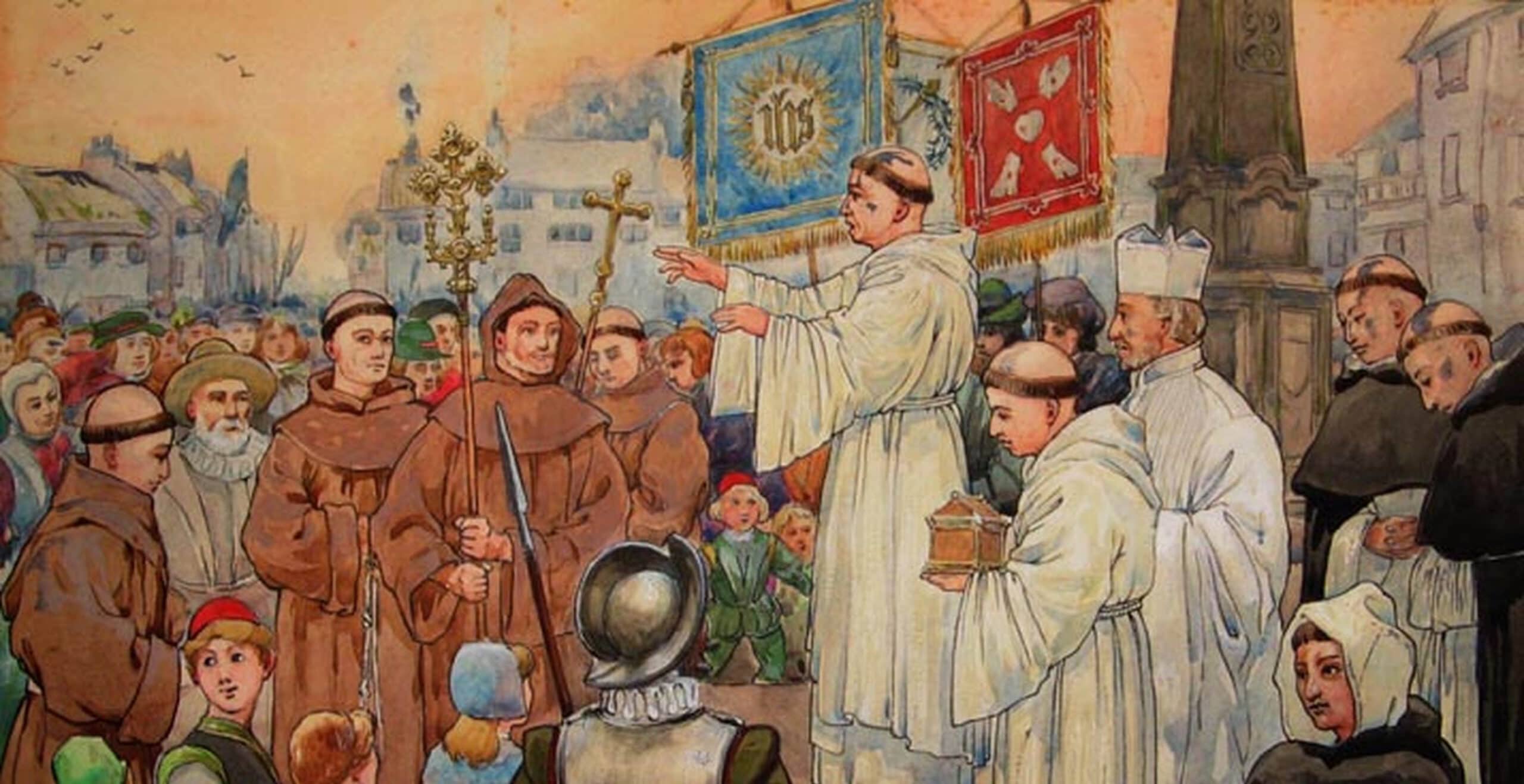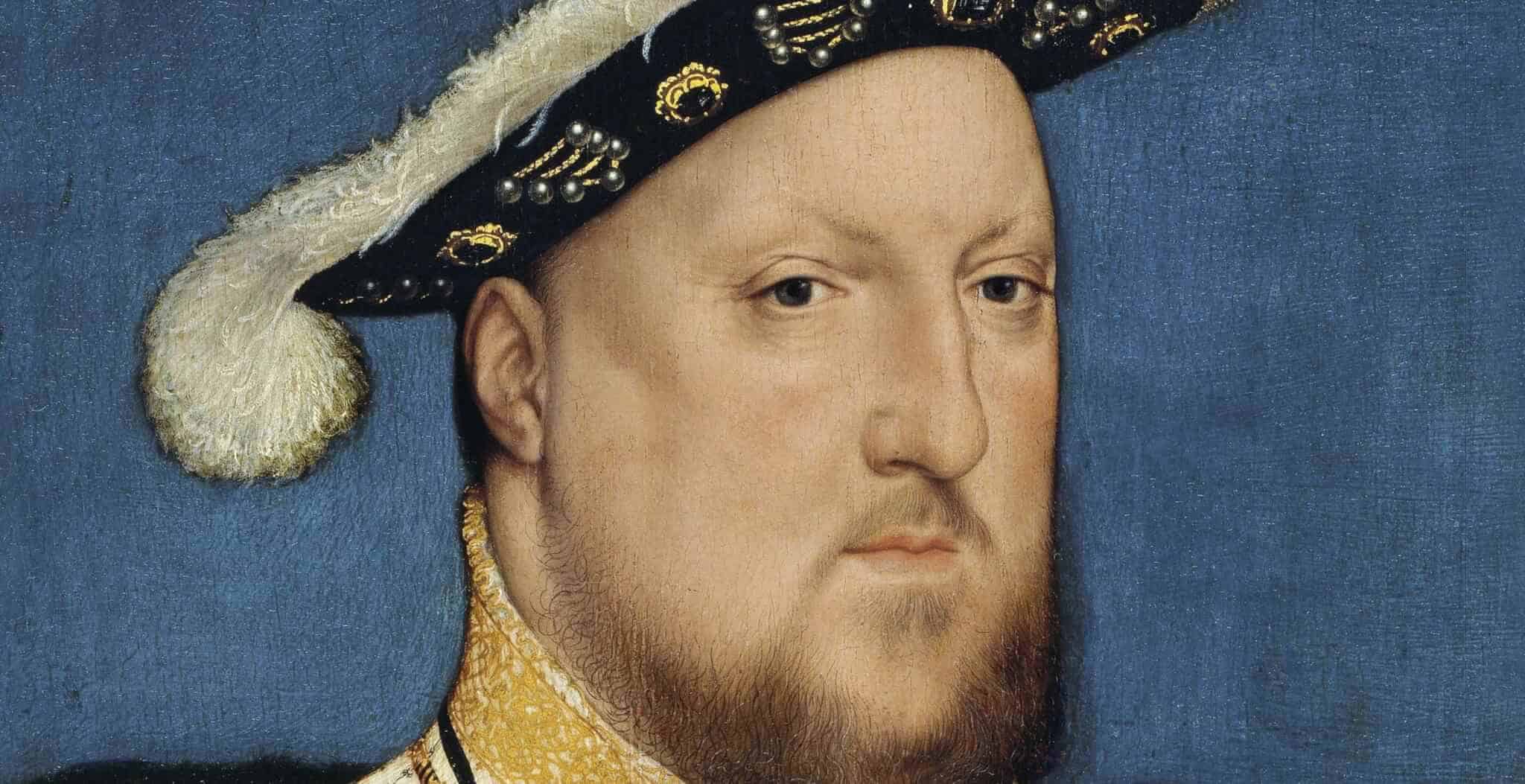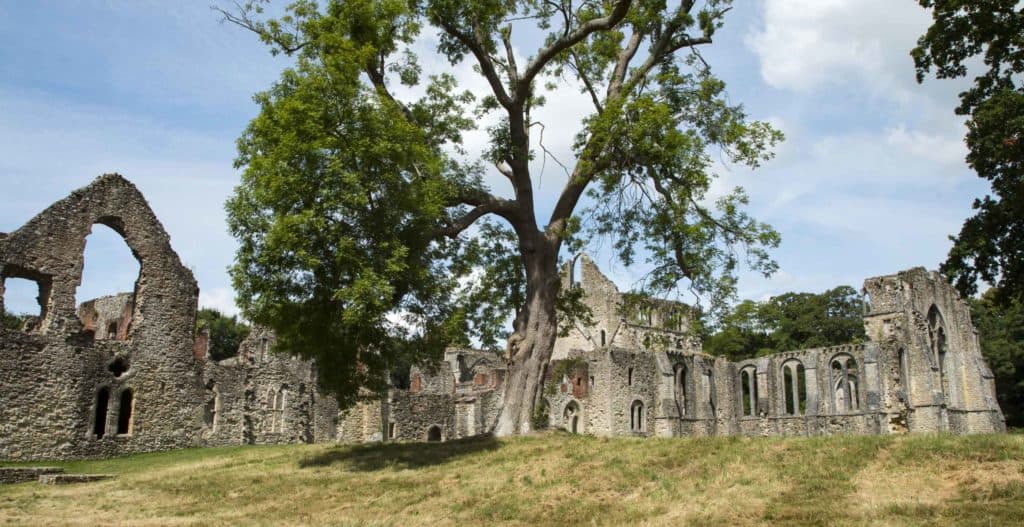When King Henry VIII made the decision to break with Rome, he set into motion a series of events which would change the course of history. Not only that, his dramatic rejection of Catholicism would leave scars, not only on the landscape of Britain but inevitably on the people who suffered under his new legislation.
Resistance to such sweeping changes did materialise, most notably in the form of “The Pilgrimage of Grace”. This was an uprising which occurred in the northern counties of the country marking a notable Tudor rebellion against the leadership and policies of King Henry VIII and most notably his right-hand man, Thomas Cromwell.
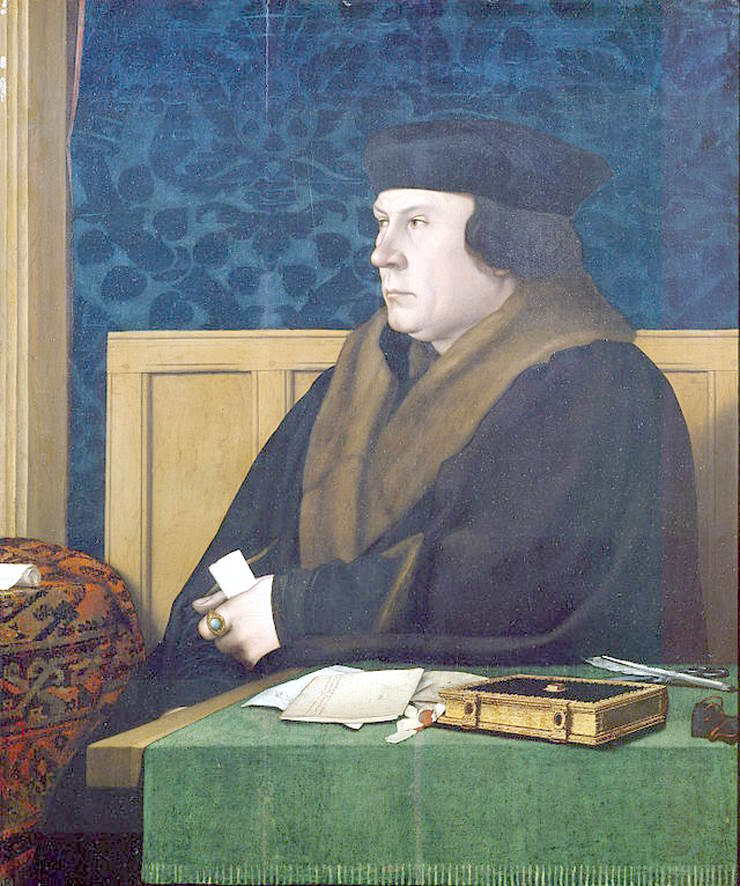
Arguably, the popular movement came about from a variety of factors, culminating with the break from the Catholic Church and the instigation of the Reformation in Tudor England. By 1536, the unaddressed grievances of many ordinary men and women had resulted in the policies of the Crown becoming the main focus for the growing feelings of discontent.
The uprising itself began in Yorkshire in October 1536 but had its origins in the suppression of the Lincolnshire Rising, which was sparked on the 1st of the month when Louth Park Abbey was forced into closure.
The short-lived rebellion in Lincolnshire involved Nicholas Melton, a local cobbler who had seized a registrar and proceeded to burn his papers and force the priests to swear an oath of loyalty. Subsequently, other rebels loyal to the cause would take the royal commissioners hostage at the nunnery at Legbourne.
Many of the king’s commissioners had been sent up to Lincolnshire in order to proceed with the suppression of the monasteries and the collection of financial subsidies.
In the days that followed, thousands of rebels from the surrounding areas had joined the cause and planned to march on to Lincoln in an act of defiance against the suppression of these sacred religious houses.
Meanwhile, the discontent had quickly turned to violence when the chancellor of the Diocese of Lincoln, Dr John Raynes was dragged from his bed and later beaten by a mob.
The rebels drew up articles of complaints to be immediately dispatched to the King. Such issues at stake included the dissolution of the monasteries as well as the promotion of certain individuals such as Thomas Cromwell and the archbishops of Canterbury and Dublin.
As part of their demands, the rebel group called for the end of the collection of subsidy as well as the end of the dissolution of religious buildings and other reforms sanctioned by the authorities which threatened the Catholic Church and local communities.
Lincolnshire was a county which housed many religious buildings and as a result was reactive to the new policies of Cromwell and Henry VIII who would subsequently remove such institutions, leaving little sign that they had ever been there, changing the religious landscape of the county.
When news of their grievances reached the King, his response was damming, questioning how “rude and ignorant common people” could be expected to appoint counsellors and prelates, moreover he went on to summarise the entire county as “one of the most brute and beastly of the whole realm”.
The result was simple; neither the Crown nor Cromwell were going to kowtow to the demands of the common folk of Lincolnshire and as such, those rebels would be forced to pay the price.
Unfortunately for the protesters, they were met by the wrath of the authorities as armed forces led by Charles Brandon, 1st Duke of Suffolk were sent to dispel these rebels, quickly dispersing the crowds who would subsequently plead to be pardoned.
Sadly, Nicholas Melton was to be one of the casualties. Known as “Captain Cobbler”, his instigation of violence resulted in his hanging at Tyburn. Others who faced a similar fate included the vicar at Louth and Thomas Moygne, a lawyer from the local area.
The suppression of the Lincolnshire Rising and its failures to accomplish its goals would result a few days later in the emergence of the Pilgrimage of Grace.
Whilst the movement has most commonly been characterised as a popular uprising against the religious changes instigated by the power of Henry VIII, its causes have since been viewed as more nuanced, as various grievances were expressed against the authorities.
At the heart of the matter was the new religious legislation instigated by Thomas Cromwell, as the Act of Supremacy of 1534 led to the confiscation of all monastic property. The dissolution of the monasteries would see the transfer of the king’s new supremacy over all matters concerning religion as well as the ownership rights of the religious properties.
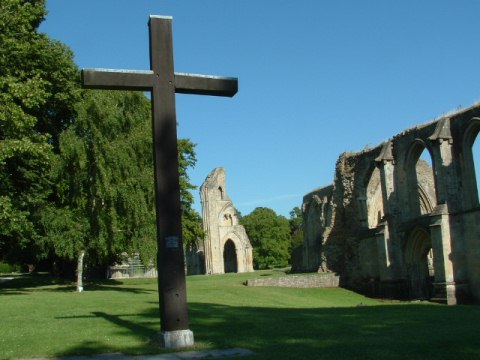
For many poor and rural communities in England, the religious buildings were the epicentre of their life, providing not only religious instruction but community, shelter and charity.
The poverty endured by those in rural Britain would be further exacerbated by the poor harvest the previous year, which led to escalating food prices. All of these factors combined would lead to economic grievances which were now framed in a religious context.
Moreover, there was a contributing political element to the discontent as many felt that the decisions made by Henry’s minister Cromwell, would lead to more government control in the northern regions.
Once the commissioners had been sent by Cromwell to the northern counties in order to collect the subsidies and dissolve the monasteries, the febrile atmosphere became increasingly evident.
Inspired by events in Lincolnshire, it was now the turn of Yorkshire to rebel against the suppression of their religious rights and so, just days after the clampdown of one rebellion, yet another was in full swing.
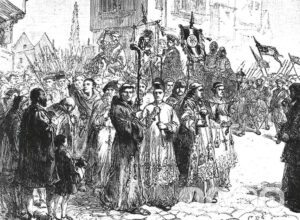
Leading from the front was the lawyer, Robert Aske, a man from an important and well-connected family. He was the son of Sir Robert Aske of Aughton and Elizabeth Clifford, the daughter of the 9th Baron de Clifford. His family connections even included royalty as Jane Seymour was his third cousin.
After practising as a barrister in London, it was his return journey to Yorkshire that would see him become involved in the emerging rebellion.
Aske was devout and had objected to the new reforms under Henry VIII and took up the cause of others in Yorkshire to lead the Pilgrimage of Grace, leading him to be considered “chief captain”.
In contrast to the failed attempt in Lincolnshire, the scale was larger and the feelings of revolt spread to other areas.
On 24th October, Aske marched into York along with 30,000 fellow protesters, amongst them some very influential figures such as Lord Thomas Darcy.
As part of the protest, they called for the King’s new tenants to be removed so that the monks and nuns who had been expelled could return home.
Initially, the authorities appeared to provide insufficient numbers of troops to combat the growing number of rebels who by now had taken over Pontefract Castle. Meanwhile, Thomas Howard, the 3rd Duke of Norfolk was pulled out of retirement and did his best to stall for more time until back-up had arrived.
In the coming weeks, the rebel group completed their list of demands which, like their fellow Lincolnshire protesters, called for the reversal of many of the changes instigated by Henry VIII’s government.
In November, Aske was given safe passage to have an audience with the King in order to lay out the requests of the group.
Thomas Howard, Duke of Norfolk received Aske’s demands and promised a pardon as well as the offer of parliament to be held at York in the coming months. Satisfied that his journey had accomplished some of its goals, Aske trusted the vague promises which had been made and asked for his fellow rebels to deescalate the tension.
Sadly, in the coming months fighting broke out once more as Sir Francis Bigod feared that Henry VIII would seek revenge on the leaders.
By 1537, Bigod was planning new rebellions in Cumberland and Westmorland, contradicting the agreement Aske had already negotiated. Whilst Aske attempted to dissuade others from joining, his attempts at keeping the peace were futile.
With Bigod now in full breach of their agreement, the Duke of Norfolk acted fast, leading to the rebellion being swiftly quashed.
This act would ultimately destroy the final efforts of the Pilgrimage of Grace, leading to large numbers of arrests. Aske, asked by Norfolk to return to London to meet with Henry VIII, was surprised on arrival with incarceration at the Tower of London instead.
Amongst those convicted and executed were a large number of titled individuals including lords and knights. In the end more than 200 were executed for their participation in events; Robert Aske would become one of the victims.
Convicted of high treason, on 12th July 1537 he was taken back to Yorkshire and hanged in chains at Clifford’s Tower in York.
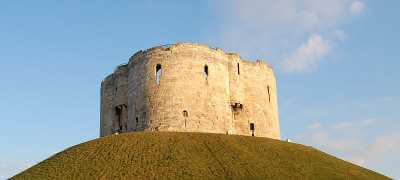
The successful suppression of the Pilgrimage of Grace enabled the government to continue with their plans and would in turn change the course of history for Britain.
The failure of the rebellion saw the systematic and thorough dissolution of monasteries continue unabated, forever changing the religious and physical landscape of the country.
Moreover, the nation was now on a new trajectory, embracing its Protestant future, whilst Catholics would continue to face persecution and discrimination in the coming decades long after Henry VIII and the instigators of these changes were gone.
The policies of Henry VIII did much to change the country and shape its future; those who resisted with the Pilgrimage of Grace have since fallen into the shadows of history.
Jessica Brain is a freelance writer specialising in history. Based in Kent and a lover of all things historical.
Published 25th August 2023
